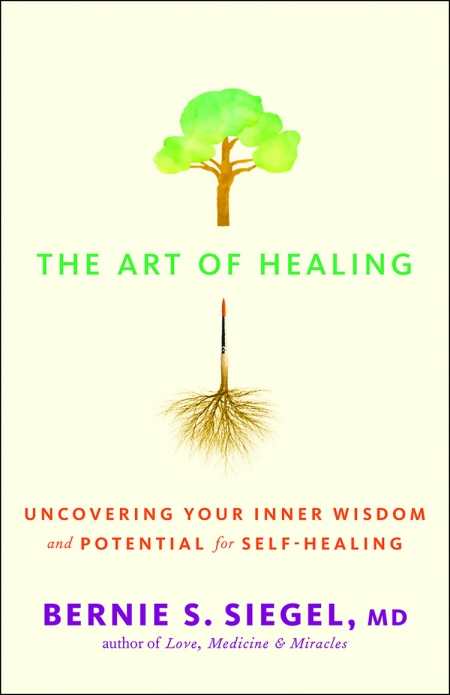The Art of Healing
Uncovering Your Inner Wisdom and Potential for Self-Healing
This wide-ranging and detailed book explores nonsurgical options that can be used along with more traditional practices.
In The Art of Healing: Uncovering Your Inner Wisdom and Potential for Self-Healing, Dr. Bernie S. Siegel offers enlightening and unconventional recommendations about alternative healing techniques. The book can also be used as a workbook, as Siegel includes a “Doctor’s Rx” at the end of each chapter with suggested exercises to encourage readers to apply the concepts he covers.
A Western-medicine-trained surgeon, Siegel retired in 1989 and has since written several books addressing alternative healing techniques and themes. Siegel is a self-described former skeptic who says once he decided to accept these techniques as potentially valid, he discovered they worked in various stages of illness. He uses his own past-life and near-death experiences, along with many anecdotal examples from patients, as evidence to illustrate that these techniques can be effective.
Siegel refers to himself as a “Jungian surgeon” who subscribes to the psychologist’s theory that there are shared collective meanings among archetypes and symbols. Like Jung, Siegel believes patients’ psychological states can impact their physical health, and he encourages people to turn to a host of creative techniques to identify their mental state in order to gain insight into their physical state.
His suggestions are geared to both patients and doctors. One practice he has found to be helpful is the use of spontaneous drawings. He views them as a way to uncover what the subconscious is trying to communicate to patients, particularly related to their emotional state. He offers seventy examples of drawings and his corresponding analysis for each serves as a mini lesson in interpreting the symbols and images. For example, he interprets purple as a spiritual color, and green as the color of life. When patients draw a house, he identifies it as a metaphor for the body. Each room in the house is symbolic of corresponding areas of the body. He also encourages the use of dream interpretation, although these techniques may have limited practical use because they require extensive interpretation, and most patients and Western-trained doctors do not have the needed experience to carry out this process. Other techniques, he suggests, such as guided imagery and laughter, are more practical and more widely-applicable.
While Siegel acknowledges that all of his techniques may not always work for everyone, he believes each can be effective for some, and, therefore, they are worth including in patients’ treatment plans. In an encouraging tone, Siegel strives to empower readers to take an active role in healing their illnesses.
This book will appeal to loyal readers of Siegel’s previous books on similar topics, but he also offers convincing anecdotal and personal evidence that may encourage even the most skeptical to consider the potential effectiveness of these alternative treatments.
Reviewed by
Maria Siano
Disclosure: This article is not an endorsement, but a review. The publisher of this book provided free copies of the book to have their book reviewed by a professional reviewer. No fee was paid by the publisher for this review. Foreword Reviews only recommends books that we love. Foreword Magazine, Inc. is disclosing this in accordance with the Federal Trade Commission’s 16 CFR, Part 255.


